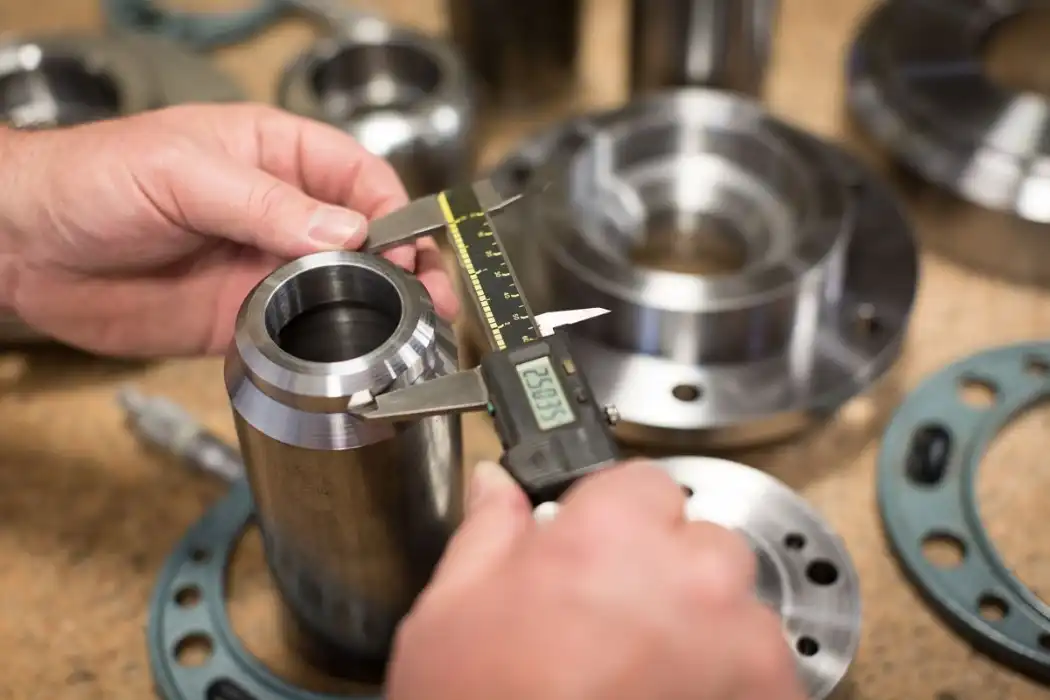Choosing the Best Aluminum for CNC Machining Projects
When it comes to selecting the ideal aluminum for CNC machining projects, the choice can significantly impact the final product's quality, performance, and cost-effectiveness. The right aluminum grade depends on various factors, including the part's intended application, required strength, machinability, and surface finish. This guide will help you navigate the complexities of aluminum selection, exploring popular grades like 6061, 7075, and 2024, their unique properties, and how they perform in different CNC machining scenarios. By understanding these factors, you'll be better equipped to make informed decisions that optimize your CNC machining projects and ensure superior results.
Understanding Aluminum Grades for CNC Machining
Common Aluminum Alloys in CNC Machining
Aluminum alloys are widely used in CNC machining due to their excellent machinability, lightweight properties, and corrosion resistance. The most common grades include 6061, 7075, and 2024. Each grade offers unique characteristics that make them suitable for different applications.
6061 aluminum is known for its good strength-to-weight ratio and excellent corrosion resistance. It's often used in structural components, automotive parts, and marine applications. 7075 aluminum boasts higher strength and is frequently employed in aerospace and defense industries. 2024 aluminum offers a balance between strength and machinability, making it ideal for aircraft structures and high-stress components.
Properties that Influence CNC Machining Performance
Several key properties affect an aluminum alloy's performance in CNC machining. Machinability is crucial, as it determines how easily the material can be cut and shaped. Strength and hardness impact the final product's durability and wear resistance. Corrosion resistance is vital for parts exposed to harsh environments. Additionally, thermal conductivity and dimensional stability play roles in certain applications.

Aluminum Grade Selection Criteria
Choosing the right aluminum grade involves considering factors such as the part's intended use, required strength, weight constraints, and budget. For instance, if maximum strength is needed, 7075 might be the best choice. However, if cost is a primary concern and moderate strength suffices, 6061 could be more appropriate. Always consider the specific requirements of your project when selecting an aluminum grade for CNC machining.
Optimizing CNC Machining Processes for Different Aluminum Grades
Cutting Tools and Speeds for Aluminum Machining
Selecting the right cutting tools and speeds is crucial for efficient aluminum CNC machining. High-speed steel (HSS) and carbide tools are commonly used, with carbide often preferred for its durability and ability to maintain sharpness. When machining softer grades like 6061, higher cutting speeds can be employed. However, harder grades like 7075 may require reduced speeds to prevent tool wear and ensure a quality finish.
Coolant and Lubrication Strategies
Proper coolant and lubrication are essential in aluminum CNC machining to manage heat generation and chip evacuation. Water-soluble coolants are often used for their excellent cooling properties. For more demanding applications, oil-based coolants or minimum quantity lubrication (MQL) systems can provide enhanced lubricity and chip control. The choice of coolant strategy should be tailored to the specific aluminum grade and machining parameters.
Surface Finish Considerations
Achieving the desired surface finish on aluminum parts requires careful consideration of machining parameters and post-processing techniques. Softer grades like 6061 can achieve excellent finishes with proper tool selection and cutting speeds. Harder grades may require additional steps like polishing or anodizing to achieve the desired surface quality. Consider the part's end-use requirements when determining the necessary surface finish and select machining strategies accordingly.

Advanced Techniques for Complex Aluminum CNC Projects
High-Speed Machining of Aluminum
High-speed machining (HSM) techniques can significantly improve productivity when working with aluminum. This approach involves using higher spindle speeds and feed rates to remove material more quickly while maintaining or even improving surface finish. HSM is particularly effective with softer aluminum grades like 6061, allowing for rapid production of complex parts. However, it requires careful consideration of tool selection, machine capabilities, and coolant delivery to ensure optimal results.
Thin-Wall Machining Strategies
CNC machining of thin-walled aluminum components presents unique challenges, including potential for distortion and vibration. Specialized strategies such as trochoidal milling or adaptive roughing can help maintain part integrity while maximizing material removal rates. These techniques involve optimizing tool paths to maintain consistent cutting forces and minimize heat buildup. When working with thin-walled parts, it's crucial to consider the specific properties of the aluminum grade being used and adjust machining parameters accordingly.
Multi-Axis Machining for Complex Geometries
For intricate aluminum parts with complex geometries, multi-axis CNC machining offers unparalleled flexibility and precision. 5-axis machining, in particular, allows for the creation of highly complex shapes with minimal setups, reducing production time and improving accuracy. When employing multi-axis techniques with aluminum, it's essential to consider the material's properties and adjust cutting strategies to prevent issues like chatter or tool deflection. Proper fixturing and workholding are also critical to ensure part stability throughout the machining process.
Conclusion
Selecting the best aluminum for CNC machining projects is a crucial decision that impacts the final product's quality, performance, and cost-effectiveness. By understanding the properties of different aluminum grades and optimizing machining processes accordingly, manufacturers can achieve superior results in their CNC projects. Whether working with common grades like 6061 and 7075 or exploring more specialized alloys, the key lies in matching the material properties to the specific requirements of each application. As CNC technology continues to advance, staying informed about the latest aluminum machining techniques and best practices will be essential for maintaining a competitive edge in the industry.

FAQs
What is the most commonly used aluminum grade for CNC machining?
6061 aluminum is one of the most widely used grades due to its excellent machinability, good strength-to-weight ratio, and corrosion resistance.
How does the choice of aluminum grade affect machining speed?
Softer grades like 6061 can generally be machined at higher speeds, while harder grades like 7075 may require slower speeds to prevent tool wear and ensure quality.
Can all aluminum grades be anodized after CNC machining?
While most aluminum grades can be anodized, some perform better than others. Grades like 6061 and 7075 are well-suited for anodizing, offering excellent corrosion resistance and aesthetic appeal.
Choose BOEN for Your Aluminum CNC Machining Needs | BOEN
At BOEN Prototype, we specialize in high-quality CNC machining services for a wide range of aluminum grades. Our expertise in prototyping and low-volume production ensures precision and efficiency for your projects. With advanced multi-axis CNC machines and skilled technicians, we deliver superior aluminum parts across various industries. Experience the BOEN difference in aluminum CNC machining. Contact us at contact@boenrapid.com to discuss your project requirements and discover our tailored solutions.
References
Smith, J. (2022). "Aluminum Alloys in Modern Manufacturing: A Comprehensive Guide."
Johnson, L. et al. (2021). "Optimizing CNC Machining Processes for Aerospace-Grade Aluminum."
Brown, R. (2023). "Advanced Techniques in Multi-Axis CNC Machining of Aluminum Components."
Davis, M. (2022). "Surface Finish Optimization in Aluminum CNC Machining."
Wilson, K. (2021). "Comparative Analysis of Aluminum Grades for High-Performance Applications."
Thompson, S. (2023). "Innovations in Coolant Technologies for Aluminum CNC Machining."

How Can We Help?

Your Trusted Partner in Rapid Manufacturing.



